Multomic analysis reveals the potential of LAG3 as a prognostic and immune biomarker and its validation in osteosarcoma
- PMID: 40646089
- PMCID: PMC12254381
- DOI: 10.1038/s41598-025-10290-w
Multomic analysis reveals the potential of LAG3 as a prognostic and immune biomarker and its validation in osteosarcoma
Abstract
Lymphocyte activation gene 3 (LAG3) is a member of the immunoglobulin superfamily and has been implicated in the development, growth, and progression of several cancers. However, the biological role of LAG3 has not been investigated in pan-cancer datasets. We sought to perform a comprehensive bioinformatics analysis of pan-cancer datasets to determine the relationship of LAG3 with patient survival prognosis, tumor microenvironment, immunotherapy responsiveness, and mechanisms regulating tumorigenesis. We used TCGA, GTEx, TIMER2, GDSC, CTRP, and TISCH databases and online websites to extract data on LAG3 in a variety of cancers, and analyzed pan-cancer patient datasets to explore not only the correlation between LAG3 expression and clinical stage, diagnosis, and prognosis of cancers, but also the correlation between LAG3 expression, gene variants, methylation status, tumor stemness, and tumor immunity. The biological functions of LAG3 in osteosarcoma cells were determined by in vitro CCK-8, wound healing and transwell assays. Finally, through in vivo experiments, the study preliminarily explored the impact of LAG3 on osteosarcoma and its correlation with immune genes. Pan-cancer analysis showed that LAG3 expression was up-regulated in a variety of cancers, and the expression of LAG3 was closely related to the clinical stage, diagnosis and prognosis of cancers. GO and KEGG enrichment analyses showed that LAG3 was enriched in inflammatory, metabolic, and immune signaling pathways in a variety of cancers. Meanwhile, LAG3 expression not only has an impact on patient immunotherapy prognosis and immunotherapy response, but also has a significant effect on drug sensitivity. In vitro experiments have shown that LAG3 promotes the proliferation, migration and invasion of osteosarcoma cells. In vivo xenotransplantation experiments further confirmed that LAG3 promotes the growth of osteosarcoma, and the expression of LAG3 is positively correlated with CD8, CD19, and CD68. Our study suggests that LAG3 is a promising marker for cancer diagnosis, prognosis, and treatment.
Keywords: Diagnosis; Immune; LAG3; Pan-cancer; Prognosis.
© 2025. The Author(s).
Conflict of interest statement
Declarations. Competing interests: The authors declare no competing interests.
Figures

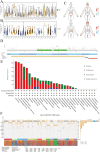
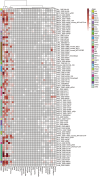


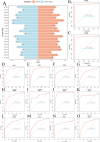

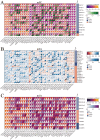
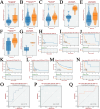

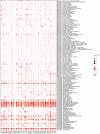
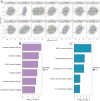
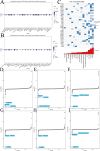
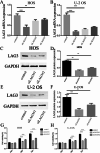
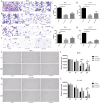
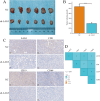
Similar articles
-
Comprehensive pan-cancer analysis reveals NTN1 as an immune infiltrate risk factor and its potential prognostic value in SKCM.Sci Rep. 2025 Jan 25;15(1):3223. doi: 10.1038/s41598-025-85444-x. Sci Rep. 2025. PMID: 39863609 Free PMC article.
-
Systematic pan-cancer analysis identifies PKNOX1 as a potential prognostic and immunological biomarker and its functional validation.Front Immunol. 2025 Jun 23;16:1533690. doi: 10.3389/fimmu.2025.1533690. eCollection 2025. Front Immunol. 2025. PMID: 40625743 Free PMC article.
-
Myeloid Zinc Finger 1: insights into its oncogenic potential, prognostic value, and impact on immune microenvironment across cancers.Front Immunol. 2025 Jun 27;16:1591912. doi: 10.3389/fimmu.2025.1591912. eCollection 2025. Front Immunol. 2025. PMID: 40655141 Free PMC article.
-
The prognostic value of elevated vascular endothelial growth factor in patients with osteosarcoma: a meta-analysis and systemic review.J Cancer Res Clin Oncol. 2012 May;138(5):819-25. doi: 10.1007/s00432-012-1149-7. Epub 2012 Jan 25. J Cancer Res Clin Oncol. 2012. PMID: 22274866 Free PMC article.
-
The safety and efficiency of photodynamic therapy for the treatment of osteosarcoma: A systematic review of in vitro experiment and animal model reports.Photodiagnosis Photodyn Ther. 2022 Dec;40:103093. doi: 10.1016/j.pdpdt.2022.103093. Epub 2022 Aug 27. Photodiagnosis Photodyn Ther. 2022. PMID: 36031143
References
-
- Smith, B. D., Smith, G. L., Hurria, A., Hortobagyi, G. N. & Buchholz, T. A. Future of cancer incidence in the United States: Burdens upon an aging, changing nation. J. Clin. Oncol.27, 2758–2765. 10.1200/jco.2008.20.8983 (2009). - PubMed
-
- Soerjomataram, I. & Bray, F. Planning for tomorrow: global cancer incidence and the role of prevention 2020–2070. Nat. Rev. Clin. Oncol.18, 663–672. 10.1038/s41571-021-00514-z (2021). - PubMed
-
- DeVita, V. T. Jr. & Chu, E. A history of cancer chemotherapy. Cancer Res.68, 8643–8653. 10.1158/0008-5472.Can-07-6611 (2008). - PubMed
MeSH terms
Substances
Grants and funding
- 82002840/National Natural Science Foundation of China
- 82002300/National Natural Science Foundation of China
- 2024HNSLXRY08/Advanced Scientific Research Foundation for the Returned Overseas Chinese Scholars in Henan Province
- LHGJ20240046/Key Scientific and Technological Projects in Henan Province
- YXKC2021046/Henan Province Health Science and Technology innovation outstanding young talents training program
LinkOut - more resources
Full Text Sources
Medical
Research Materials

